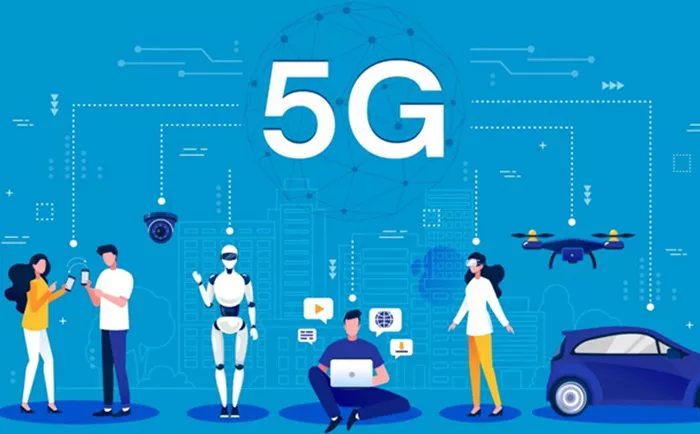The integration of 5G IoT (Internet of Things) technology into the automotive industry is reshaping the landscape of car insurance. By providing high-speed, low-latency connectivity, 5G IoT enhances data collection, improves customer experiences, and introduces innovative insurance models. This article explores how 5G IoT works with car insurance, detailing its impact on various aspects of the industry, including usage-based insurance, real-time monitoring, accident investigation, fraud prevention, and vehicle-to-everything (V2X) communication.
Enhanced Data Collection
The advent of 5G IoT brings a new level of sophistication to data collection in the automotive sector. Unlike previous generations of mobile technology, 5G offers unparalleled speed and reliability, allowing for the seamless transmission of vast amounts of data. Vehicles equipped with 5G IoT sensors can continuously gather data on various parameters, such as:
Driving Behavior: Information about speed, acceleration, braking patterns, and cornering.
Vehicle Performance: Data on engine efficiency, fuel consumption, tire pressure, and battery status.
Environmental Conditions: Details on road conditions, weather, and traffic patterns.
Insurance companies leverage this rich dataset to gain insights into individual driving habits and vehicle performance. This comprehensive data allows for more accurate risk assessment and enables insurers to tailor their offerings based on real-time information.
Usage-Based Insurance (UBI)
Usage-based insurance (UBI) is a model that has gained traction with the rise of telematics and IoT technologies. With 5G IoT, this model becomes more effective and widespread. Here’s how it works:
Telematics Devices: Vehicles are equipped with telematics devices that monitor driving behavior. These devices track metrics such as speed, braking intensity, and distance traveled.
Smartphone Apps: Alternatively, smartphone apps with IoT capabilities can provide similar data by integrating with the vehicle’s systems.
Insurance companies use this data to calculate premiums based on actual driving behavior rather than traditional risk factors. Safe drivers who exhibit cautious driving habits may benefit from lower premiums, while those with riskier driving patterns might face higher rates. This personalized approach not only incentivizes safe driving but also fosters a more transparent relationship between insurers and policyholders.
See also: How Much Does 1 Day Car Insurance Cost?
Real-Time Monitoring and Alerts
One of the most significant advantages of 5G IoT is the ability to provide real-time monitoring and alerts. This capability transforms how insurers interact with policyholders and respond to incidents:
Accident Detection: Vehicles equipped with 5G IoT sensors can detect accidents immediately. The system sends real-time alerts to the insurer, who can then dispatch emergency services or provide immediate assistance to the driver.
Hazard Warnings: 5G connectivity enables vehicles to receive and transmit hazard warnings in real time, such as road closures or severe weather conditions, enhancing driver safety and preventing potential accidents.
This instantaneous communication not only improves safety but also streamlines the claims process. Insurance companies can react quickly to incidents, reducing response times and providing timely support to policyholders.
Improved Accident Investigation
Accurate and timely data collection plays a crucial role in accident investigation. With 5G IoT, insurance companies can access detailed information from vehicles involved in accidents, which includes:
Sensor Data: Information from various sensors, such as impact force and airbag deployment.
Camera Footage: Video recordings from onboard cameras that capture the accident’s dynamics.
This data provides a comprehensive view of the accident, helping insurers assess the situation more accurately. By analyzing this information, insurance companies can determine fault, evaluate damage, and expedite claims processing. This leads to fairer outcomes for policyholders and faster resolution of claims.
Fraud Prevention
Fraudulent claims are a significant challenge for the insurance industry. 5G IoT technology enhances fraud detection and prevention through:
Data Verification: Continuous data transmission from vehicles allows insurers to cross-reference reported claims with actual driving data. Discrepancies or inconsistencies can signal potential fraud.
Pattern Recognition: Advanced analytics and machine learning algorithms can identify unusual patterns or behaviors that may indicate fraudulent activity.
By leveraging real-time data and sophisticated analytics, insurers can reduce the incidence of fraudulent claims, ensuring that resources are allocated to genuine policyholders and maintaining the integrity of the insurance system.
See also: What Does $1,000 Deductible Mean Car Insurance?
Enhanced Customer Experience
5G IoT technology contributes to a more personalized and responsive customer experience in several ways:
Tailored Recommendations: Insurers can use driving data to offer personalized recommendations and feedback to drivers, helping them improve their driving habits and potentially reduce their premiums.
Customized Insurance Products: Based on individual driving patterns, insurers can create customized insurance products that better meet the needs of each policyholder.
This enhanced customer experience fosters stronger relationships between insurers and policyholders, leading to higher satisfaction and loyalty.
Vehicle-to-Everything (V2X) Communication
Vehicle-to-everything (V2X) communication is a key feature of 5G IoT that enables vehicles to interact with their surroundings. This includes:
Vehicle-to-Vehicle (V2V): Communication between vehicles to share information about speed, location, and direction, reducing the risk of collisions and enhancing road safety.
Vehicle-to-Infrastructure (V2I): Interaction with infrastructure elements such as traffic signals and road signs to optimize traffic flow and provide real-time updates.
Vehicle-to-Pedestrian (V2P): Communication with pedestrians to increase awareness and prevent accidents.
V2X communication contributes to a safer driving environment, which can influence insurance models and rates. Safer roads result in fewer accidents, potentially lowering insurance premiums and promoting overall road safety.
Conclusion
The integration of 5G IoT technology into the automotive industry is revolutionizing car insurance by enhancing data collection, enabling usage-based insurance models, and improving real-time monitoring and accident investigation. Additionally, it plays a crucial role in fraud prevention, enriches the customer experience, and supports advanced V2X communication. As 5G technology continues to evolve, its impact on car insurance is expected to grow, driving innovation and efficiency in the industry. Insurers and policyholders alike stand to benefit from the advancements brought by 5G IoT, leading to a more personalized, transparent, and safer insurance experience.
Related Topics:

